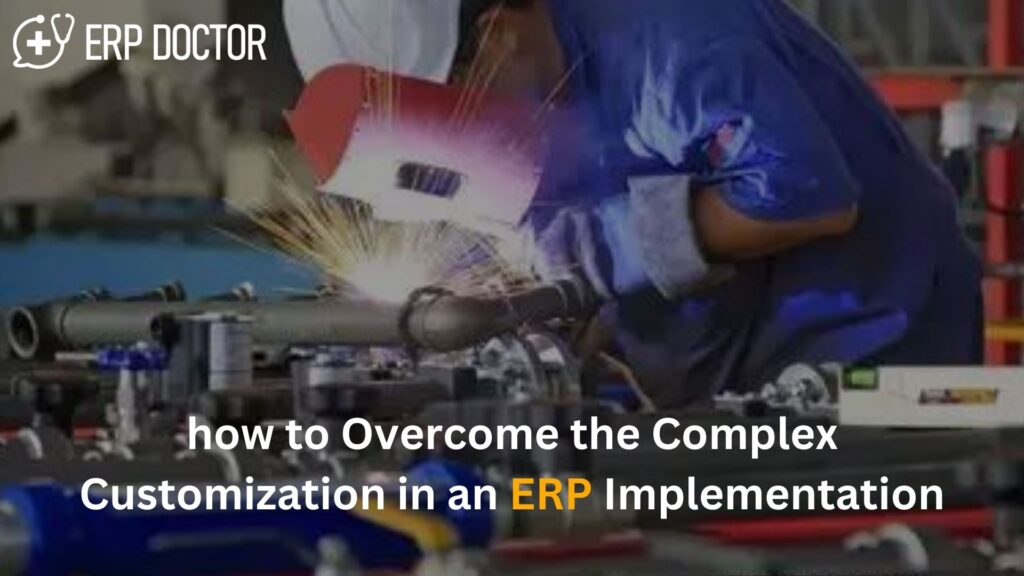
How to Overcome the Complex Customization in an ERP Implementation

Fixing the Challenges & Solutions of Complex Customization in an ERP System
Enterprise Resource Planning (ERP) systems are designed to streamline and integrate various business processes. However, achieving the perfect fit often involves complex customization. While customization can tailor the ERP to meet specific business needs, it can also introduce significant challenges. The key is to find a balance: the more you customize, the more critical it becomes to manage and document these customizations effectively.
Understanding the Impact of Complex Customization
Complex customization is sometimes necessary to align the ERP system with unique business requirements. However, the more you customize, the more critical it becomes to manage these changes carefully. Over-customizing can lead to increased implementation costs, extended timelines, and potential difficulties in maintaining the system.
The More You Customize, the More Critical It Becomes
When implementing an ERP system, it’s essential to recognize that every customization can have far-reaching implications. Custom code and bespoke configurations can complicate upgrades, patches, and integrations with other systems. Therefore, it’s crucial to:
- Prioritize Requirements: Focus on customizing the features that deliver the most value. Aim to fit at least 60% of your needs using the ERP solution’s standard functionalities.
- Assess the Impact: Evaluate how each customization will affect the system’s performance, scalability, and future upgrade paths.
- Involve Stakeholders: Engage key stakeholders in the decision-making process to ensure that customizations align with strategic goals and operational needs.
Mitigating Risks Associated with Complex Customization
To mitigate the risks of complex customization, it’s vital to prepare thoroughly and maintain meticulous documentation. Here are some best practices to follow:
Fit 60% of Your Needs from Standard ERP Features
ERP solution providers design their systems to address common business needs across various industries. Before diving into customization, explore the standard features thoroughly. Try to fit at least 60% of your requirements using the built-in functionalities. This approach minimizes the need for custom code and leverages the robustness of the standard ERP system.
Prepare Detailed Documentation
For any customization deemed necessary, prepare comprehensive documentation or source code. This documentation should include:
- Customization Scope: Clearly define what is being customized and why.
- Technical Specifications: Provide detailed technical specifications, including database schema changes, workflow modifications, and integration points.
- Testing Procedures: Outline the testing procedures to ensure that the customization works as intended and does not introduce new issues.
- Maintenance Guidelines: Offer maintenance guidelines to help future developers understand and manage the customizations.
Safeguard Your Customizations
Store all customization-related documents and source code separately and securely. This practice ensures that in the event of any issues, such as system failures or changes in implementation partners, you can quickly provide the necessary information to new ERP implementation teams. Having a well-documented customization repository can significantly ease transitions and reduce downtime.
Complex customization in an ERP implementation is sometimes unavoidable, but it comes with critical responsibilities. By aiming to fit at least 60% of your needs using standard ERP features and meticulously documenting any customizations, you can mitigate risks and ensure smoother transitions in the future. Remember, the more you customize, the more critical it becomes to effectively manage and document these changes. By following these best practices, you can overcome the challenges of complex customization and achieve a successful ERP implementation.
To learn more about our services, please visit us at: https://erpdoctor.in/
Embark on an inspiring journey today – Visit our website and discover a world of knowledge, creativity, and endless possibilities! Don’t miss out on exclusive content and exciting updates. Click here to explore and be part of our thriving community!







